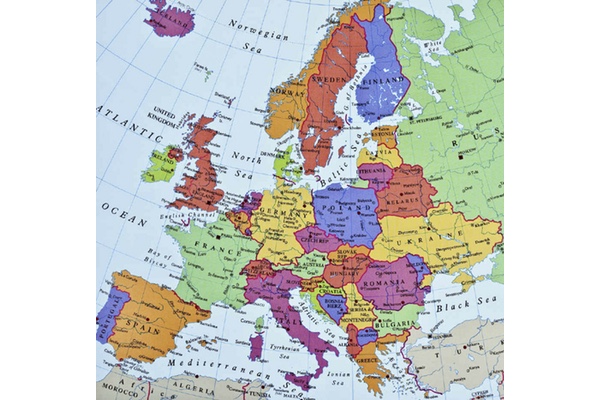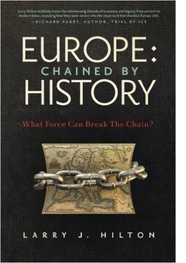A United States of Europe: Is It Possible?

Is a United States of Europe Possible? I think it is. In fact, the survival of Europe depends on its ability to form a union led by one prime minister, one parliament, one judiciary, and a central bank comparable to the U.S. federal reserve. This thesis may be controversial because the divergent interests, languages, cultures, and histories of European nations make such a union seem nearly impossible. Many readers may react with strong avowals that Europe will never be fully unified. But my response is that “never” is a long time, so be careful what you say.
 Political
unification of Europe won’t be quick or easy, and it will take one
or more crises to force the issue. But continuing ISIS attacks,
Russian aggression toward Eastern European members, or the collapse
of Europe’s over-extended banking system could trigger growing
awareness that union is necessary. A banking crisis has an impact,
not only on the economy, but on the political and military decisions
of nations. Economic crises in Europe were, directly or indirectly,
catalysts for worldwide depression and the waging of two world wars.
Political
unification of Europe won’t be quick or easy, and it will take one
or more crises to force the issue. But continuing ISIS attacks,
Russian aggression toward Eastern European members, or the collapse
of Europe’s over-extended banking system could trigger growing
awareness that union is necessary. A banking crisis has an impact,
not only on the economy, but on the political and military decisions
of nations. Economic crises in Europe were, directly or indirectly,
catalysts for worldwide depression and the waging of two world wars.
In 1873, Vienna held its first and only World Exhibition to celebrate its industrial achievements and stimulate trade. The desire to show off Austria to the world unleashed a frenzy of greed among hoteliers, causing wild speculation in the stock market and soaring inflation. Just eight days after the opening of the exhibition, the Vienna stock exchange went into meltdown, and its collapse was the first domino to fall on the path that led to World War I.
Prior to World War II, the financial structure of Austria again came to the brink of ruin. A customs union was proposed to facilitate trade between Germany and Austria and allow the free import of German agricultural goods to feed the hungry people of Vienna. But sharp opposition from France shut down the proposal, and France put further pressure on Austria by withdrawing its short-term deposits from Austrian banks. French actions played a major role in the May 11, 1931 collapse of the Kreditanstalt, one of the biggest international banking houses in Central Europe, holding two-thirds of Austrian assets and liabilities. Its bankruptcy caused bank failures in neighboring states, and, when the bank could not cover its losses, the Austrian government stepped in. But only a loan from the Bank of England prevented complete collapse of the Austrian financial system. The crisis quickly spread beyond Austrian borders, until the entire Central European finance system was called into question. Fears aroused by the Austrian failure were soon reflected in Germany, as foreign investors began to withdraw their capital.
In the years following 1931, the cloud of a general economic depression settled over all of Europe, and it didn’t stop there. Unemployment spiraled, not only in Europe but also in the United States. Many historians believe the European financial crisis in Europe caused the Great Depression, and not the other way around. The crisis strengthened a trend that had begun with World War I. Instead of taking a common view of problems and solutions, each European state acted in isolation. Countries focused on protecting their own insufficient resources from the uncertainties of the international system, and high tariffs were the first measure to which they resorted. Tariffs imposed by each country may have protected industrial products and raw materials, but they also maintained artificially high prices. While such measures contributed to domestic stability, they depressed international trade. Long after the crisis passed, world trade failed to revive, primarily because of persistent restrictive practices on the part of individual states.
The rise of economic nationalism had a consequence not well understood at the time. Many European states were driven toward political authoritarianism as they confronted the dilemma of choosing between economic disaster or war. There is no doubt that Germany’s economic woes helped to propel Adolf Hitler to a position of absolute power.
The European Union of today was formed to foster collaboration and prevent a banking crisis like the failure of the Kreditanstalt in 1931. But Europe is still reeling from a recent global financial crisis, and a strident nationalism is once more gaining ascendancy in the political sphere. Great Britain is in the process of extricating itself from the European Union. Marine Le Pen, ultra-conservative supporter of the “Frexit” (the exit of France from the EU), has a good chance of winning the next French election, and Germany is moving to the right in resistance to waves of refugees pouring into that country. The EU is likely to realign itself into nationalist blocs, and there could be massive turmoil as things sort out over the next several years. The fragile union appears to be headed for breakup.
Europe has experienced such trends before, and things didn’t end well. Isn’t it time for a look back to see if lessons learned can help diffuse the crises that the EU and the world face today? As Alexander Hamilton said, “To read history is to be forewarned of the pitfalls that lie in store for every organized society.” So far, we have almost made the case for the skeptics that say Europe will never form a true union. Certainly, the history of Europe is fraught with bitter enmity, intrigue, competition, and war, yet three times in the last two thousand years, it has been fully unified. Two examples include the years spent under the dictatorships of Napoleon and Hitler, but once, they got it right. And, when they did, they formed a union that lasted for two hundred years.
In the years following the accession of Augustus in BC 27, the Mediterranean world was almost completely at peace, and war was confined to frontier areas. Never in human history had there been so long a span of general tranquility. Rome virtually ruled the world, with only the tribes of Northern Europe and Central Africa living outside the Pax Romana. Safe from raids by marauding combatants, people lived their lives in relative contentment, secure in the knowledge that they were sheltered by Rome, a stern but generous master that demanded only unyielding obedience to its laws. Rome even granted to communities the right to adapt those laws to local circumstances. Under Roman protection, trade flourished, cultivation expanded, and prosperity came to regions that had never progressed beyond a subsistence level.
While most believe a fully unified Europe can’t be achieved, of course it can. The question is only what kind of a crisis it will take to make it happen. Winston Churchill was right when he said that the nations of Europe must band together to form a United States of Europe. From an economic standpoint, this is the only way European nations can compete commercially with the United States and China. And, beyond economic concerns, the very survival of Europe and its member nations may depend upon unity in the face of cultural, political, military, and financial storms now looming on the horizon.